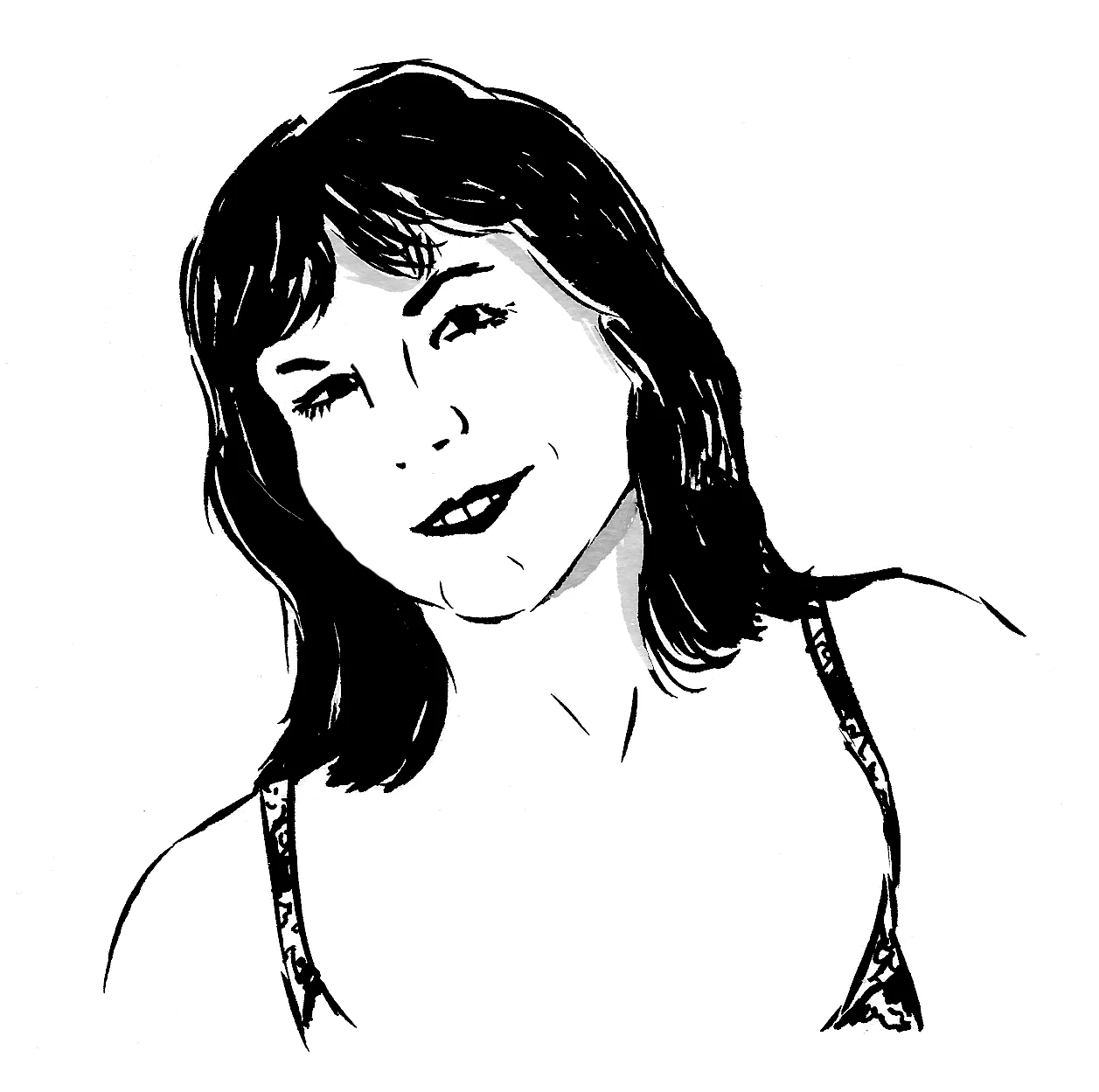Communing with the Imaginary Friend in Amanda Goldblatt's HARD MOUTH
Imaginary friend Casper the Friendly Ghost, relative to Harold of the Purple Crayon.
by Tess Crain
What is the meaning of an imaginary friend? Appearing mainly to children but at times lasting into adulthood, invented companions can signal madness, creativity, both, or neither. Sometimes, they simply serve as company. A writer I know used to have an unreal pal named Zee—“he had a kind of sarcastic jauntiness”—who resembled a wisp of smoke and wore a monocle, like an ephemeral Mr. Peanut: “he was my only real friend for a while.” My roommate had a tiny, bald, blue man who sat on her shoulder and scouted for danger. A college friend once had multiple miniature dragons. In most cases, these familiars erupt from the collision between psyche and environment: reading a fantasy series, watching performance art, loneliness.
Literature and film, too, include the fictive among the already fictional. Characters with whom others interact but who are not—however ambiguously—real nevertheless inspire horror and delight, drive plot, and deepen themes, ideally all at once (Tony in The Shining, the titular rabbit in Harvey). They also reveal the conscience of a work. Be it loss (in Mrs. Caliban, a six-foot-seven amphibian with the body of a “well-built” man appears to the protagonist after her son dies, she miscarries, and her husband begins an affair; see also, “A Better Angel”); the “joys of motherhood” (Tully, The Babadook); absurdity (Waiting for Godot, Alice’s Adventures in Wonderland), or the fraught division between reality and genius (A Beautiful Mind, Calvin and Hobbes), the churning river of narrative can, spilling over the edge of convention, produce colorful visions. Done right, an imaginary friend illuminates the hidden while resisting analysis, offering a partial wholeness that could itself split anew.
In her inaugural novel, Hard Mouth (Counterpoint), Amanda Goldblatt both invokes and pivots from this tradition. After an awkward opening chapter—perhaps due to the common debut impulse to overjustify—the book settles into a masterwork concerning wilderness survival and grief. The twenty-something narrator, Denise, has watched her father battle cancer since she was fifteen. She lives in a state of extended preemptive mourning, where time is a function of illness: she attends class “between the first two cancers,” endures “the second cancer’s long slog.” She also has Gene. Portly, dramatic, fond of silk pajamas—“Hitchcock sans elegance”—he materialized upon her dad’s initial diagnosis: “I’d acquired stress-related heartburn and this imaginary friend. Only the latter lingered.” Gene is both her and not-her, a method of fighting illogical dying with illogical life.
Then “Pop” falls sick for a third time and announces he will not seek treatment. With deliberate passivity, like a lucid dreamer who makes no attempt to alter her dream, Denise gets fired from her job, finds a remote cabin on Craigslist and rents it through the spring before packing a truck—“When Ma asked why I’d traded in the sedan, I reminded her how I’d always wanted a pickup. I never had”—with items culled from prepper forums and outdated wilderness guides. After a few false starts, having left loved ones just enough hints to stave off a missing persons report, our protagonist drives “focused and blind” in late September into the mountains. There she follows a Tarot spread of tower, hermit, fool, and death, as well as a cat (whom she names “the Thing”) and a gun. Throughout, Gene guides and challenges, succors, incites. He seeds the idea for the woodland retreat and, while “reminiscing” about his hunting dogs, speaks aloud the title (a hound with a “hard mouth” bites into, rather than softly clenching, game, often mangling it). As the novel progresses, he balloons then deflates, dilating as Denise navigates the changing light in herself and her surroundings.
Writing with a nightshade-tipped pen—luminously dark and potent, aware of her own mythology, tending toward the hallucinatory (Gene) and the anesthetic (alcohol, TV)—Goldblatt never loses empirical rigor. Indeed, when in the past Denise’s father had tried to teach her, age eight, empathy through hypnosis, she merely feigned playing along: “I was young but not gullible. I was young but aware. This was penance.” Yet from that encounter with the art of hypnosis she did seem to separate from herself, occupying another girl’s experience for a night. It is this combination of dissociation and identification that marks Denise, and Goldblatt’s book, with such ambivalent sensitivity, a preoccupation with living that extends beyond the human and all the way to the humane.
Other works have addressed coping through avoidance at different levels of remove (Walden, My Year of Rest and Relaxation), but where the norm these titles have established tends to wax solipsistic on the page, Hard Mouth creates something more elemental and expansive. Death is taken seriously, respected, and Denise responds with unmodern humility, subdividing until she understands what she may have missed. Fiction becomes a dialectic between not the conscious and subconscious minds but consciousness and the collective unconscious—the latter a shared well from which everything alive can drink, at least for a time.
Tess Crain is a graduate of the NYU Creative Writing Program, where she served as a Goldwater Fellow. Her writing has appeared in the New Republic. She lives in New York City.







